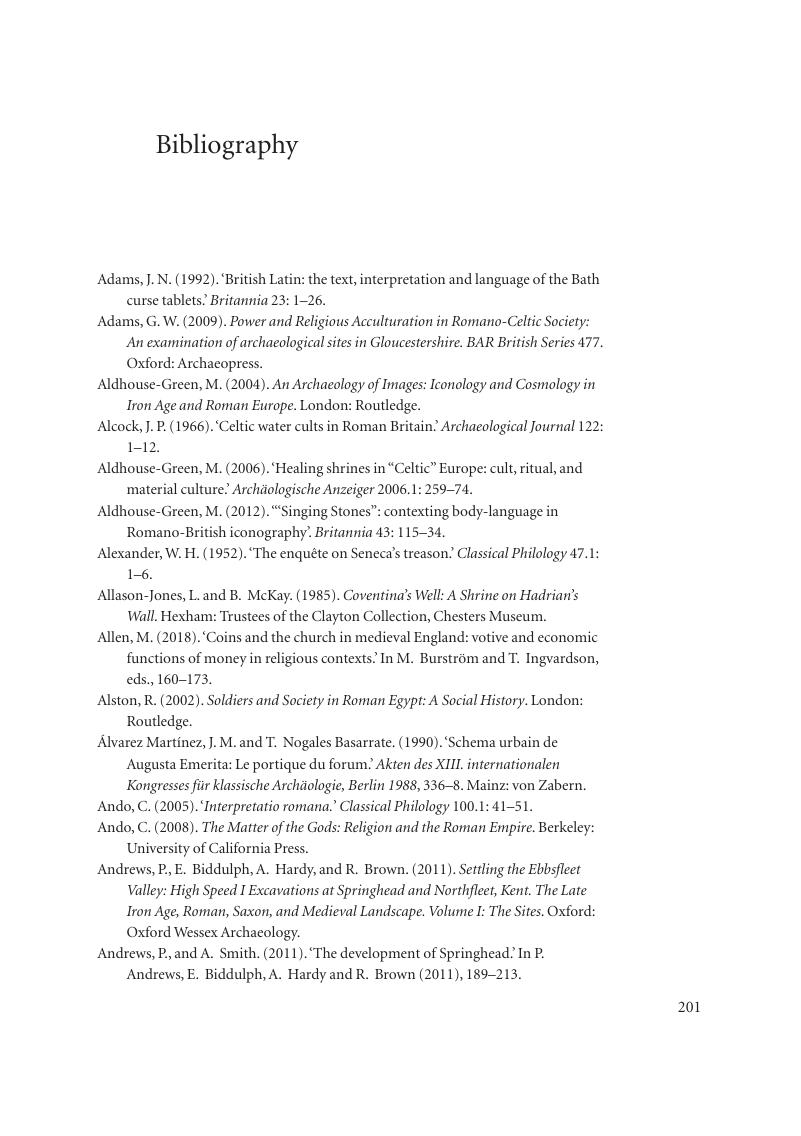Book contents
- The Sanctuary at Bath in the Roman Empire
- Cambridge Classical Studies
- The Sanctuary at Bath in the Roman Empire
- Copyright page
- Contents
- Figures
- Acknowledgements
- Abbreviations
- 1 Discovering Roman Bath
- 2 From Bath to Aquae Sulis
- 3 Experiencing Aquae Sulis
- 4 Aquae Sulis and Empire
- 5 Water from the Earth
- 6 The Local Writ Large
- Conclusion: From Aquae Sulis to Bath
- Bibliography
- Index
- References
Bibliography
Published online by Cambridge University Press: 07 January 2020
- The Sanctuary at Bath in the Roman Empire
- Cambridge Classical Studies
- The Sanctuary at Bath in the Roman Empire
- Copyright page
- Contents
- Figures
- Acknowledgements
- Abbreviations
- 1 Discovering Roman Bath
- 2 From Bath to Aquae Sulis
- 3 Experiencing Aquae Sulis
- 4 Aquae Sulis and Empire
- 5 Water from the Earth
- 6 The Local Writ Large
- Conclusion: From Aquae Sulis to Bath
- Bibliography
- Index
- References
Summary

- Type
- Chapter
- Information
- The Sanctuary at Bath in the Roman Empire , pp. 201 - 225Publisher: Cambridge University PressPrint publication year: 2020

